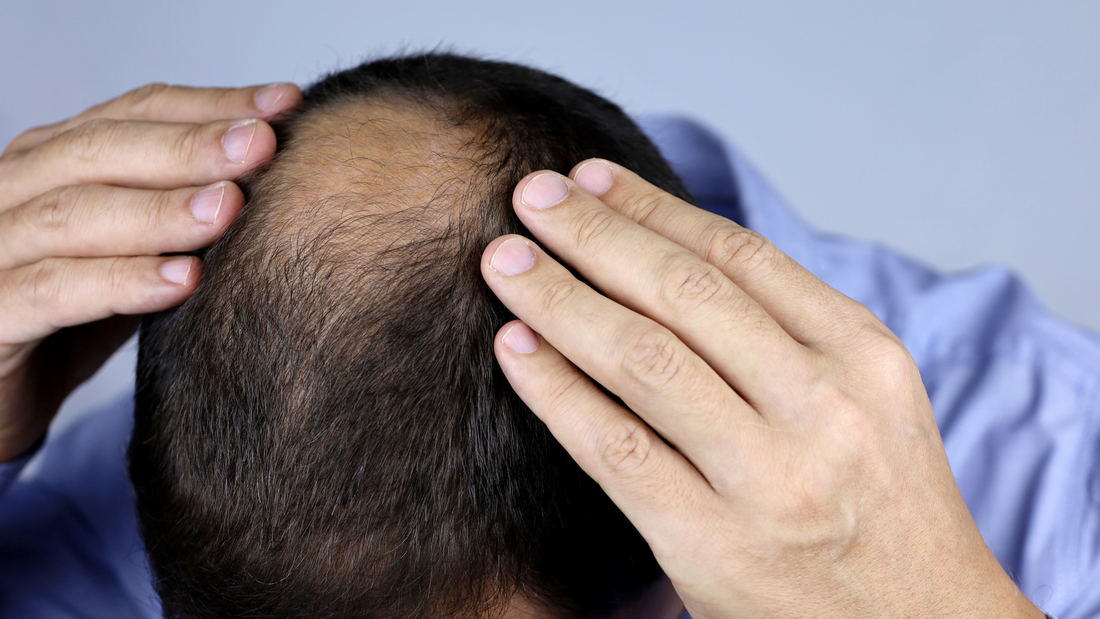
Can Hair Loss Really Be Reversed?
Share
Hair loss is a common concern that affects millions of people worldwide, and it can take a toll on both confidence and self-esteem. Fortunately, with advancements in dermatology, there are now several effective treatments available for different types of hair loss. But the big question remains: Can hair loss really be reversed?
The answer depends on the type and cause of the hair loss. Here, we’ll explore the different types of hair loss, their causes, and the treatments that can potentially reverse or slow down the process.
Understanding the Types of Hair Loss
There are several types of hair loss, each with distinct causes and treatment options. The two most common forms are androgenetic alopecia and telogen effluvium, but others include alopecia areata and scarring alopecias.
1. Androgenetic Alopecia (Male and Female Pattern Baldness)
Androgenetic alopecia is the most common form of hair loss, affecting both men and women. This condition is typically hereditary and is related to the hormone DHT (dihydrotestosterone). In men, it usually leads to receding hairlines and balding at the crown, while in women, it results in overall thinning, especially at the crown.
Can it be reversed?
- Partially. Androgenetic alopecia can often be slowed down and, in some cases, hair regrowth can occur. Medications such as minoxidil (Rogaine) and finasteride (Propecia) can help. Minoxidil stimulates hair growth by prolonging the growth phase of hair follicles, while finasteride reduces DHT levels.
- Other treatments, such as low-level laser therapy and platelet-rich plasma (PRP), have shown promising results in stimulating hair regrowth for people with this condition.
- Hair transplant surgery is another effective solution for those seeking a permanent solution, as it involves moving hair follicles from areas of dense growth to areas with thinning or balding.
2. Telogen Effluvium
Telogen effluvium is a temporary form of hair loss that often occurs after a significant physical or emotional stressor, such as surgery, illness, extreme weight loss, or childbirth. During this phase, hair follicles shift prematurely into the “resting” phase (telogen), causing noticeable shedding.
Can it be reversed?
- Yes! Telogen effluvium is usually reversible. Once the underlying cause is addressed, the hair often regrows on its own within 3 to 6 months.
- Supporting your hair with a nutritious diet, reducing stress, and taking supplements like biotin and zinc can help speed up the recovery process.
- In cases where the cause persists (such as ongoing stress or hormonal imbalance), addressing these underlying factors can help restore hair growth.
3. Alopecia Areata
Alopecia areata is an autoimmune condition in which the body’s immune system mistakenly attacks hair follicles, leading to patchy hair loss on the scalp, face, and sometimes other parts of the body.
Can it be reversed?
- Potentially. Hair can grow back on its own, but treatment options include corticosteroid injections, topical immunotherapy, and oral immunosuppressive drugs to reduce inflammation and stimulate regrowth.
- In some cases, regrowth is spontaneous, especially in milder cases. However, for others, treatment may be needed on an ongoing basis to prevent further loss.
4. Scarring Alopecias
Scarring alopecias, or cicatricial alopecias, are a group of conditions where inflammation destroys hair follicles and replaces them with scar tissue. This type of hair loss is permanent because the follicles are irreversibly damaged.
Can it be reversed?
- No, unfortunately, scarring alopecias cannot be reversed since the hair follicles are permanently destroyed. However, early diagnosis and treatment can slow the progression and prevent further hair loss. Anti-inflammatory medications and steroid treatments can help manage symptoms and protect the remaining follicles.
Other Treatments for Hair Loss
1. Platelet-Rich Plasma (PRP)
PRP therapy involves injecting a concentration of platelets from your own blood into the scalp. This treatment has been shown to promote hair growth by increasing blood flow to the follicles and thickening the hair shaft. PRP is a popular option for those with androgenetic alopecia and can be an effective part of a hair restoration plan.
2. Low-Level Laser Therapy (LLLT)
LLLT uses light energy to stimulate cellular activity in hair follicles, which can promote hair growth. This is a non-invasive treatment that can be done at home with devices such as laser combs or caps, or at a dermatologist’s office. LLLT is suitable for androgenetic alopecia and can be a great complement to other treatments.
3. Hair Transplant Surgery
For those with significant hair loss, hair transplant surgery is an option. This procedure involves moving hair follicles from one part of the scalp (usually the back or sides) to areas of thinning or balding. It’s a permanent solution, but it requires careful consideration and should be performed by a qualified professional.
Final Thoughts
While not all types of hair loss can be fully reversed, many can be effectively managed or slowed down with the right treatment plan. Early intervention is key, so if you’re experiencing hair loss, it’s best to consult a dermatologist who can determine the underlying cause and recommend personalized treatment options. With advances in dermatology, more people are able to achieve significant improvements in hair density and overall scalp health.
Whether you’re dealing with temporary shedding or a more permanent condition, there are solutions available that can help you regain confidence and feel good about your hair again.
If you’re concerned about hair loss and want to explore your options, don’t hesitate to schedule a consultation. Together, we can determine the best course of action to help you achieve the results you desire.
